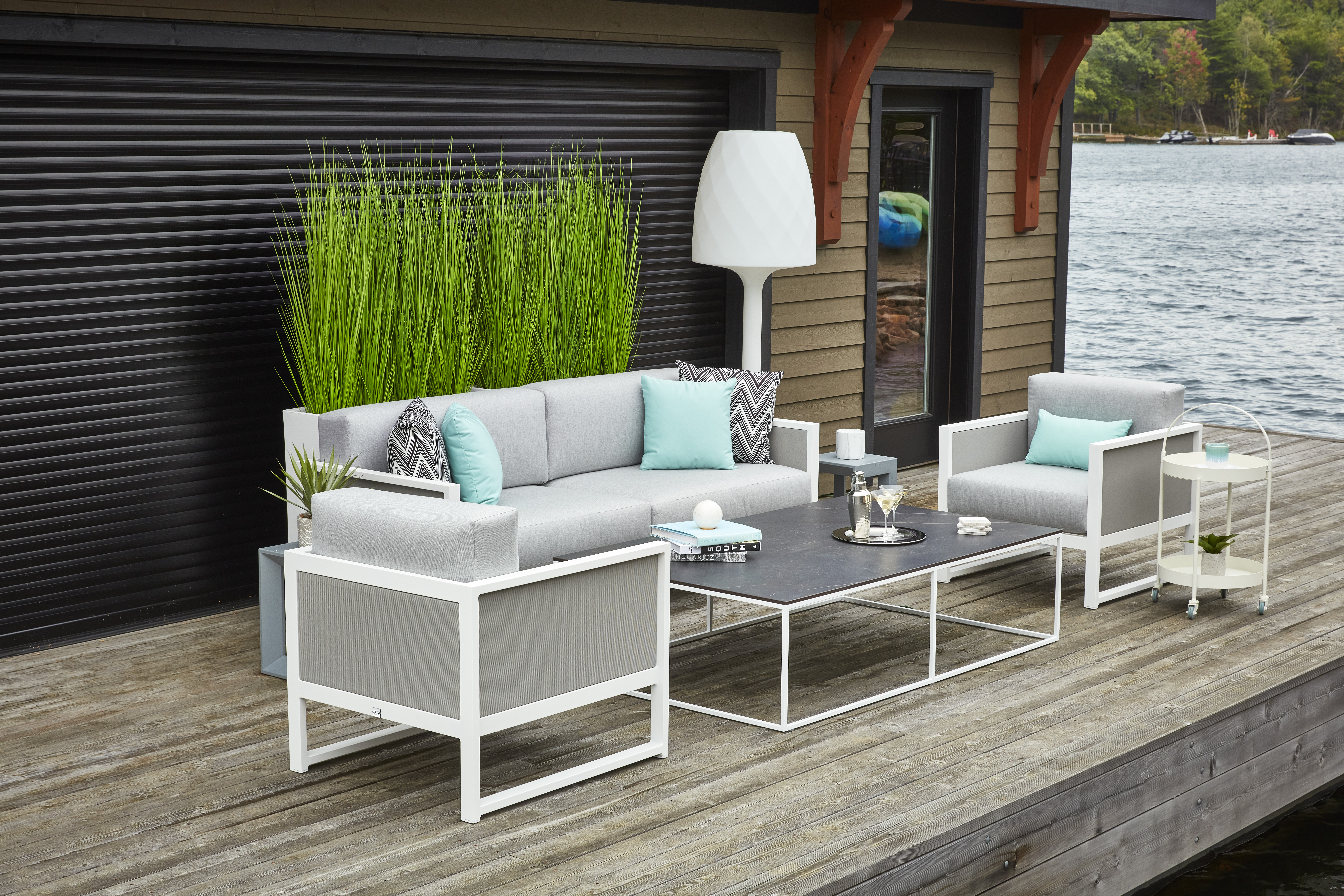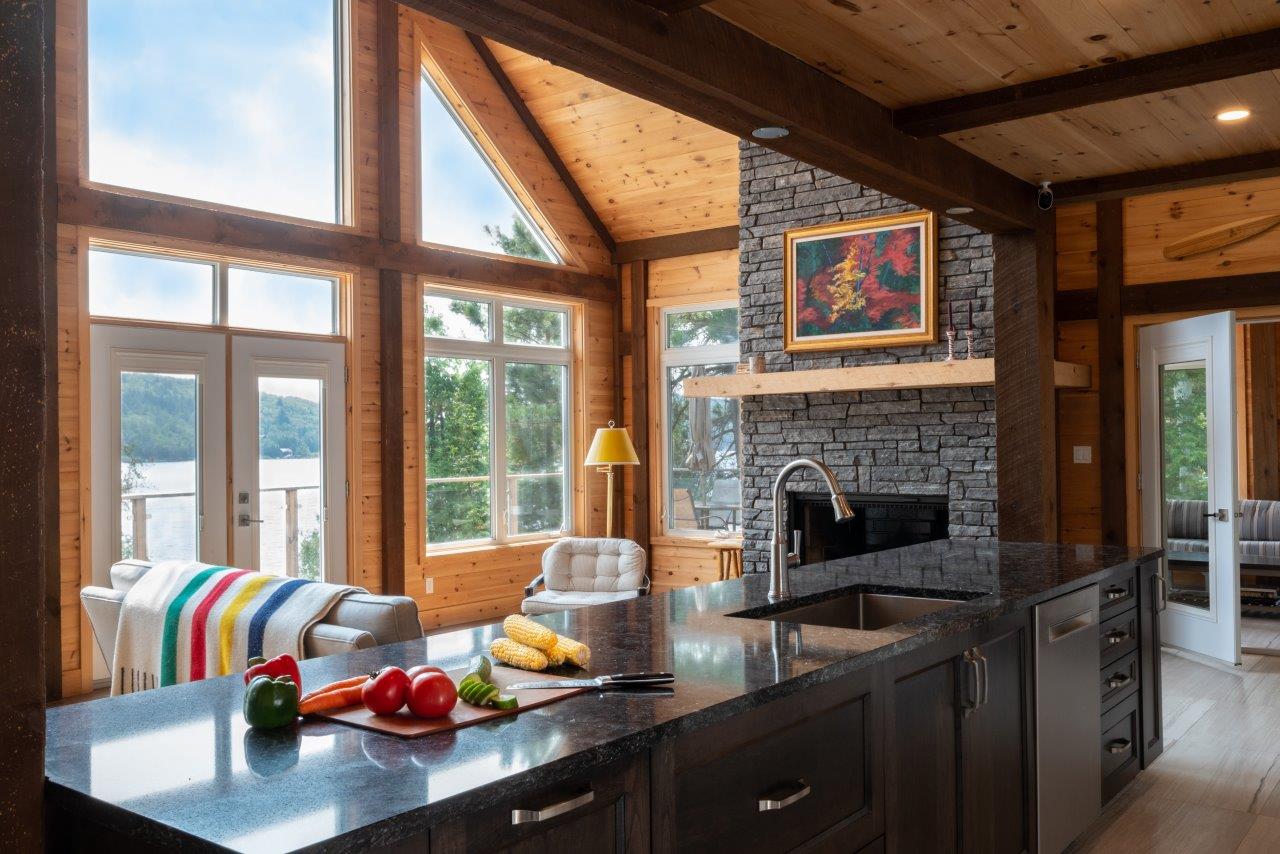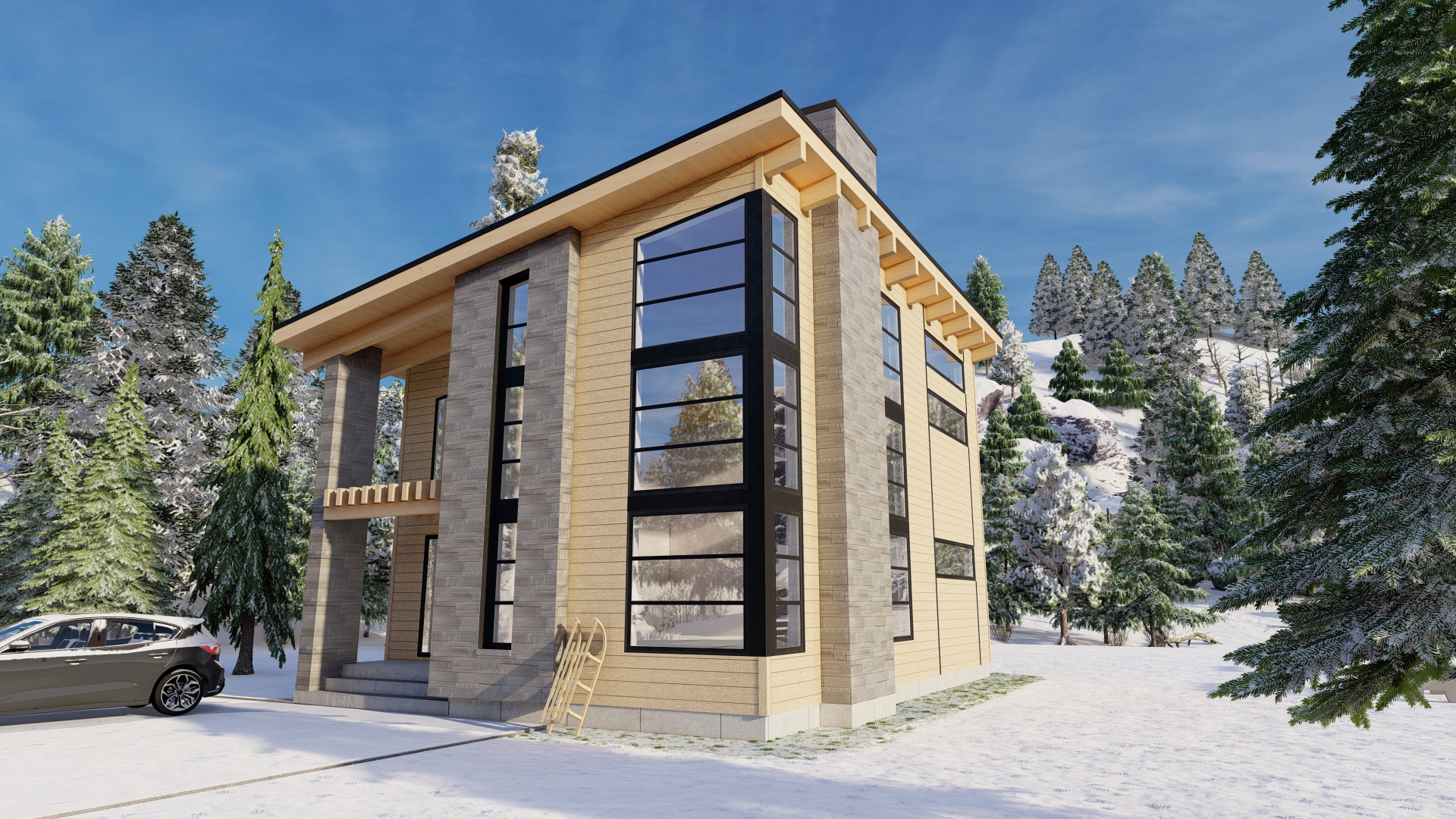April 15, 2020
I yelled at my husband on the street today. A stranger stopped and asked us for directions. I kept walking. Matthew, my husband, paused to help, standing less than six feet from the man. “Oh my God, stand back!” I shouted. I grabbed Matthew by the arm, pulled him away, and suggested to the stranger that if he was lost, he could use his smartphone.
When I apologized to Matthew at home, I explained that everything is stressing me out about Toronto these days: opening the door to our condo lobby, touching the buttons on the elevator, passing people in the halls. The virus could be anywhere. It’s a conversation we have had before, like after I called Matthew “reckless” for picking a stray nickel up off the sidewalk. “Try to relax,” he told me. I said, “It’s hard.” I feel nervous every time we go out, and the scores of shuttered storefronts depress me. “I want to leave,” I said, referring to our vague plans of escaping to our cabin in the Laurentians. “We can’t,” he replied.
A simple truth. Quebec has closed its border to Ontario. Fine. I will continue distracting myself the same way everyone is: eating too many carbs, watching too much Netflix.
May 17, 2020
I’m sitting in the car with countless cans of soup jangling in boxes on the backseat. The noise is only buffered slightly by the bags of powdered milk and sacks of flour packed on and around the cans. Quebec just reopened its border, clearing the police checkpoints that have been in place for weeks. We are moving to the cabin until at least September. Matthew doesn’t think his office will re-open before then, and I work remotely anyway. Our provisions are for us to self-isolate for the first 14 days—a rule for out-of-province transplants. The cabin only has a mini fridge, so almost everything has to be non-perishable. Yes, we have a lot chili for our dinners. Yes, I think that will be smelly. But as we crossed from Hawkesbury, Ont., into Grenville, Que., Matthew asked me if I was excited. “Yes,” I said, exhaling a deeper, longer breath than I have in the last two months.
Little cabin in the woods
We spend so little time inside I hardly notice the cramped quarters.
Good morning lake
When I was young I used to think that cities were exciting and that rural life was dull. Now, I feel endlessly fascinated by the things we see in nature.
Catching the last few rays of weekend light
I remind myself how lucky I have been to have a second home to escape the pandemic.
May 22, 2020
There are still patches of snow on the ground. I often see my breath billow out in clouds. The trees are bare. Spring is late to start in the Laurentians compared to Toronto, where cherry trees and magnolias bloomed before we left. The prolonged cold could be why there are still mice living in our stove—critters that burrowed in over the long winter and never left. They somehow got into the cabin, then made their way through the back of the oven, tunnelling through the insulation. Matthew is worried that we need a new appliance. Every time we turn it on, the stench of cooking mouse urine tinges the air. While we figure out a fix, I’m using the barbecue for everything, including bread (like everyone else, I’m making my own these days). The first loaf was a brick. The second over-rose, touched the underside of the barbecue lid, then deflated like a punctured balloon. After I finished crying from frustration, I tore up the salvageable scraps and made bread pudding.
June 15, 2020
Our cabin is wee. At 300 sq. ft., it’s less than half the size of our condo in Toronto, which itself feels compact. The cabin’s kitchen, dining area, and bedroom are all one space—a bit like a studio apartment. The only room with a door is the bathroom, which has a bathtub, but we mainly use the outdoor shower. You might think I feel claustrophobic. Instead, I feel free. We spend so little time inside I hardly notice the cramped quarters. We tend to wake up and go kayaking. At lunch we go for walks. After work we sometimes jog or go for hikes into the backwoods behind the cabin. The cabin sits on four acres that adjoin conservation land with lots of trails to explore. When I was young, I used to think that cities were exciting and rural life was dull. Now, I feel endlessly fascinated by the things we see in nature. A trio of birds is always landing on our porch bird feeder, where I’ve put out peanuts. There’s a downy woodpecker and a black-capped chickadee and a red-breasted nuthatch. They travel as a team because they help each other find food. I can now name those birds. Can I even name my neighbours in the city?
June 29, 2020
Today as I walked up the path to the cabin, two bunnies hopped in front of me. The slow spring has turned into a vibrant summer. All around me, flowers are in bloom: lilies and asters and foxgloves. I feel like we are living in a William Morris wallpaper—thick, lush, and colourful. Some of the plants only last an instant. Purple irises, which have petals as frilly as rococo filigree, came and went in a few days. I think I’m paying closer attention to nature as a way to distract myself. Every morning at around the same time, I check the numbers. Cases have been down lately, but already epidemiologists are predicting another wave in the fall. I don’t want to think about that now. “Come outside,” Matthew said the other night. “You’ll want to see this.” All around us, flecks of yellow lit up the black skies. Fireflies. Still, not everything natural delights me: we are in peak blackfly season, and my arms and legs itch all over. From time to time, I still hear mice scratching somewhere in the cabin. No, we still don’t have a working oven.
Pandemic productivity
We mailed out 40 jars of jam to friends and family while at the cottage last year. And baking happened, of course.
Next level baking
Homemade croissants at the cabin.
Sunday afternoon spin
My husband, Matthew,
and I revived an old
boat of my grandfather’s.
This is the day
we finally got it going.
July 19, 2020
As far as I can remember, there have always been raspberries around the cabin. I’m red-green colour blind, so I have a hard time seeing the berries. When Matthew looks at our hill, he can basically see all the red dots against the green leaves. I just see green. If I’m up close to the berries, I can see the shape, but I’m not sure of the colour. When I come back from berry picking, Matthew always says a lot of them aren’t ripe yet. As a child, my Granny Hague would pick and drop them into my small, outstretched hands, and I would pop them into my mouth. Lately, Matthew has been fetching baskets full—more than I’ve ever seen before. “It’s because of your uncle,” says Matthew. After my grandparents owned the cabin but before Matthew and I bought it, it belonged to an uncle who had a vague plan to clear the property of its many trees. He thought that would make it more enticing for a developer who would then subdivide the land and put up a number of cottages. He didn’t succeed in getting rid of all the trees, but he felled quite a few. Matthew and I both remember walking around in horror after we bought the cabin, taking in our semi-denuded lot. What we hadn’t noticed until this year was that dozens and dozens of wild raspberry bushes have sprouted where the trees used to be since there is now more sun hitting the ground. So far we’ve made a raspberry pie (the oven is fixed!) and six jars of jam. Matthew thinks we’ll get many more jars before the season is over—jars we plan to send to friends and family who are stuck in the city and need a care package. It’s just another reminder that sometimes good things can come from bad situations—even ones with a chainsaw-happy uncle.
August 20, 2020
Instead of turning red, the last of our raspberries are wilting on the vines. The ferns in front of the cabin are starting to go brown. It’s still August, but some days there is a crispness to the air that feels like autumn.
I wear sweaters. I don’t want to think about winter right now—it feels like last winter just ended. But I have to plan for it. The world is no closer to returning to normal than it was last spring, so my usual winter survival strategy will most likely not happen. We normally spend a few weeks visiting my Granny Grumps, my mother’s mother, in the Cayman Islands. I’ve come to rely on that mid-January vitamin D hit, without which I often catch myself wistful, staring out the window at slate skies and slushy sidewalks, finding it hard to think. I feel guilty every time I worry about the winter ahead. I remind myself how lucky I’ve been to have a second home to escape the pandemic. We’ve decided to stay in the Laurentians, where winter comes faster and harder than in Toronto. Instead of complaining, I’ve been reading about how other cultures cope with cold. Apparently, Norway has darker winters than Canada, but low rates of seasonal affective disorder. They get outside no matter what.
As they say, there’s no such thing as bad weather, only bad clothing. I’ve already ordered a rain coat for fall. In winter, I’ll have to find an ultra-warm pair of boots. I’ve learned how much being outside helps me cope with pandemic stresses, I hope I can continue that year round.
Autumn colours
The fall reds, yellows, and oranges came in blaze.
Views for days
One cold and cloudy fall day we went for a hike to Montage du
Caribou. The sun came out just as we arrived at the lookout.
Sunset on the lake
I remind myself how lucky I have been to have a second home to escape the pandemic.
September 12, 2020
I became a thief today. On our walks lately, we have noticed ripe apples on dozens of trees. They are lining the roadsides and some of our favourite walking trails. There are heaps along the P’tit Train du Nord, a long path on what used to be a train line. This morning, I collected three pounds of apples growing right beside our community post box. I’m not sure who the trees belong to. Some apples I picked up off the ground, knowing they would rot otherwise. Still, I feel guilty, especially if someone was waiting to make jelly—which is our plan. It hits a nerve with me because, according to my dad, my great-grandmother was once the victim of a traumatic apple heist. One spring, before I was born, she went to check on her prized crabapple trees near where the cabin sits, only to find two giant pits in the ground. In comparison to two missing trees, three pounds of apples is hardly noticeable. Or at least that’s what I’m telling myself.
September 25, 2020
It doesn’t take much to get me excited about a new project these days. Recently, Matthew noticed that we still have some big maples around that survived my uncle’s vision. “Maybe we should try tapping them in the spring,” said Matthew. “What a great idea,” I replied. To which he said: “It was just a thought.” But by then I was already walking around the yard, tying strings around the maple trees so that when all their branches are bare, we will know which trees to tap. The fall reds, yellows, and oranges came in a blaze. With each strong breeze, more and more leaves are falling to the ground.
5 simple tips for tapping a maple tree
October 1, 2020
No mice sightings lately. I have spent the better part of two weekends under the cabin, not to mention over $200 in caulking, steel wool, and various wood fillers (one has to work!) trying to plug every entry point. It’s hubris to think they’ll never get back in, and one thing the pandemic taught me is to be humble. Case counts were low all summer but have been rising exponentially lately. I’ll just keep my fingers crossed that things remain okay. On all fronts.
October 20, 2020
We had our first snow the other day. Several inches blanketed the ground, which is now all white except for a few dead plants poking through. I’m mourning the end of summer. All the things I enjoyed so much—the flowers and raspberries and apples—are gone. That said, we went on our first snow hike. I laced up my heavy boots and zipped up a coat as thick as a duvet. We weren’t smart enough to walk with ski poles for the icy bits. Still, as we trudged up to the top of La Montagne Verte with its view over Lac Tremblant, I tried to note all of the things still alive. The moss was as green as ever. That familiar trio of downy woodpeckers and chickadees and nuthatches hopped between tree branches (like us now, they are birds that stay north in the winter). But the view—wow. The trees are silver, spindly boughs now. Oddly, the lack of leaves may have improved the vista: we could see much farther, not just to Tremblant but to many other smaller lakes in the area. So many are ringed by pretty, old summer houses, smoke puffing from their chimneys to keep their city-scared owners warm.
December 25, 2020
Back in Toronto. We spent Christmas alone in our condo. Save for Zoom celebrations with our families, we didn’t see anyone. In the city, I’m so much more aware of how isolated we are. In the country, I never think about loneliness, I only boggle at how many mountains there are to climb.
February 18, 2021
Matthew’s birthday present from me: four buckets, four taps, a bunch of jars, and a how-to manual for making maple syrup. March 18, 2021 We went skiing today at Mont Blanc, a hill near the cabin. We both wore two surgical masks each as we waited for the chairlifts and sat in our car to eat a packed lunch—sourdough we baked ourselves (of course) and homemade raspberry jam. The sky was a brilliant blue at the top of the peaks, and the sun reflected on the snow, warming my skin. Not the same as lounging on a beach in Grand Cayman. It doesn’t have to be, it’s its own beauty.
A snowy hike
As we truged up to the top of La Montagne Verte with its view over Lac Tremblant, I tried to note all of the things still alive.
Pancakes!
After five weeks of boiling sap, I got to enjoy some of our homemade maple syrup.
Gold in the snow
Learning to make syrup was a good way to spend time outside in winter.
March 20, 2021
After sitting outside in the snow, watching pot after pot after pot after pot of maple sap boil down on our barbecue, I can officially say I no longer hate nor fear winter. Without winter, there would be no maple syrup. And fresh, homemade maple syrup is freakin’ awesome. It’s a joyful thing when the late winter temperatures start to rise again, and the frozen sap in the maple trees begins to run. We’ve collected more than 40 litres of sap so far. Often I’ve had to remove my parka to stop myself from sweating. I don’t know if we’ll ever have the chance to make maple syrup again. I imagine that at some point, Matthew will have to go back to his office and that means returning full-time to Toronto. I don’t want to think about that. We have lived in the Laurentians so many months now, it feels like home. Still, Matthew tells me that when we send out our maple syrup to friends and family, we should ask them to keep their bottles so that we can re-fill them in the future, the next time we stand knee-high in snow waiting for the sap to boil. I’m already looking forward to that day.
May 22, 2021
I planted two crabapple trees by the cabin today. I’m not sure if they are the same type my great-grandmother had. I selected a kind that should be able to make it through a Laurentian winter. I planted them to stop me from stealing other people’s apples, and because the tag on the tree reminded me of the whole last year: tart, bitter but also a little sweet.
This story was originally published as “A Deeper, Longer Breath” in the Oct. 21 issue of Cottage Life. Don’t miss his story, “Why I Hated the Cottage as a Teenager.”




























